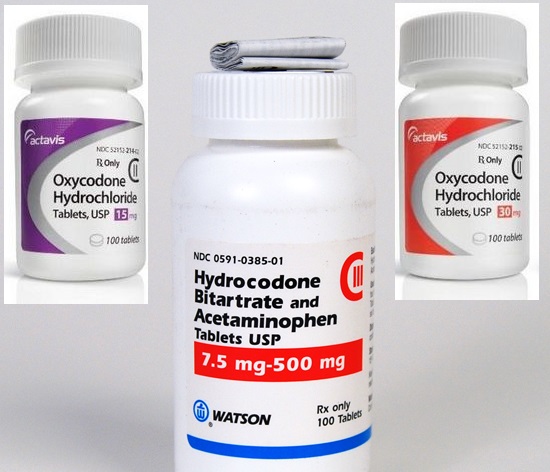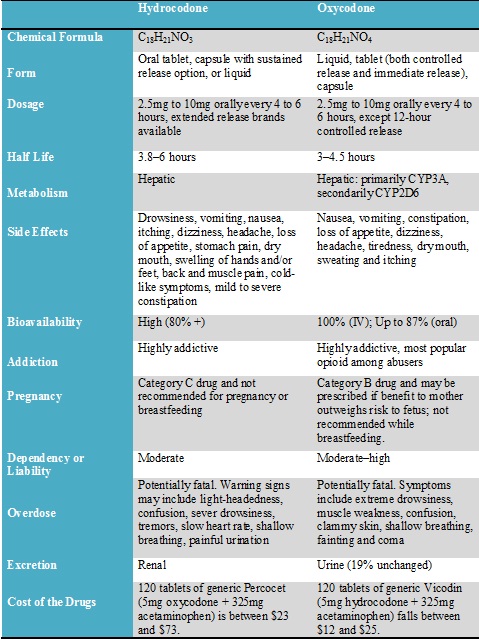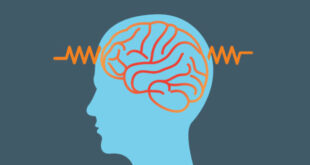Read about Hydrocodone vs. Oxycodone Side effects, potency, Pain Relief. Hydrocodone VS. Oxycodone side effects, Potency and Nausea.
Hydrocodone and Oxycodone are drugs that are used to treat extreme pain. These are the most popular opioid or narcotic analgesics prescribed for pain relief. Both are available only with a prescription from your doctor. Both interfere with your central nervous system’s pain signals. They prevent the nerves in your body from sending pain signals to your brain. These are used for the relief of moderate to severe pain.
Hydrocodone and oxycodone possess a lot of similarities on account of being classified as recreational drugs or as controlled substances. Both of these drugs are available in generic form as well which are relatively not too much expensive in contrast to other recreational drugs. However, with such drugs, one would have to fear for a potential overdose as even a slight bit of extra dosage may play havoc with the body. Both these drugs belong from Schedule II controlled substance class of drugs.
Frequently both oxycodone and hydrocodone are combined with other painkillers or chemicals. Pure oxycodone is available in a brand name medicine called Oxycontin. Pure hydrocodone is available in an extended-release form. The brand name for the medicine is Zohydro ER. Here are some of the characteristics of these drugs:

Hydrocodone vs Oxycodone Side effects, potency, Pain Relief
Oxycodone and Hydrocodone as signified by their names are typical narcotics which could only be prescribed. Hydrocodone are known with brands like Lorcet, Lortab and Vicodin while Oxycodone is marketed under genres like NSAID and ibuprofen.
Oxycodone vs Hydrocodone Effectiveness in Pain Relief
Oxycodone and Hydrocodone are both powerful painkillers, and they have been shown to be highly effective at treating pain.
In the event of an emergency situation, researchers have found the two medicines treat pain equally. In a study with both drugs, researchers found that both oxycodone and hydrocodone were equally effective at treating pain caused by fractures. Patients experienced equal pain relief 30 and 60 minutes after the medicine was taken. However, patients who were given hydrocodone experienced constipation more frequently than patients who used oxycodone.
Another study found that the combination of oxycodone and acetaminophen (another type of painkiller) was 1.5 times more potent than hydrocodone with acetaminophen when taken at equal doses.
Hydrocodone vs Oxycodone Potency
Oxycodone is a highly potent drug and comes as separate preparations. Hydrocodone on the other hand comes in a combination with other drugs and cannot be administered without a secondary preparation combined with it. Oxycodone can also be administered in combined preparations, but, its potential as a single preparation alone is more than enough.
Hydrocodone vs Oxycodone Dosage
In terms of strength, 5mg of oxycodone is roughly equivalent of 7.5 of hydrocodone. That is the conversion required to bring about the same effects. Hydrocodone would work better if you happen to be a lightweight person with a weak stomach. But if your stomach can handle stronger stuff, then oxycodone would be the natural choice due to its relatively stronger potency. Here is the complete table that tells the comparison between hydrocodone and oxycodone dosages.

Hydrocodone and Oxycodone Side Effects
Both medications are narcotic painkillers, and they share similar side effects. These side effects include:
- shallow or light breathing
- drowsiness
- dizziness
- nausea
- vomiting
- lethargy
- dry mouth
- itching
- motor skill impairment
Hydrocodone side effects also includes more probability of constipation and stomach pain. Severe, though less common Hydrocodone side effects are:
- difficulty breathing; the risk is higher in older
adults, those with serious illnesses, and those who have respiratory disease - seizures
- lowered blood pressure; this risk is greater in
those who have reduced blood volume or who are in shock - hypersensitivity reaction, which could include
itching, hives, trouble breathing, or swelling of the tongue or throat - rapid heartbeat (leading to a possible heart
failure) - painful urination
- confusion
Painkillers Iterations and Precautions
Both oxycodone and hydrocodone are powerful painkillers, and they have been shown to be highly effective at treating pain. Do not use these powerful pain medications without first consulting with your doctor about your health history and any pre-existing conditions you have.
People who have asthma or breathing difficulties may need to avoid these pain medications entirely. Also, because of the risk of increased constipation, people who have blockages or difficulty with constipation may not want to take hydrocodone.
Do not take these medications if you have kidney or liver disease.
These drugs can make these conditions worse. Additionally, do not drink alcohol while taking these medications. The combination of alcohol and painkillers can be deadly. You may experience extreme dizziness or drowsiness. The combination can also damage your liver
The differences between the two drugs are minimal, so the best way to pick which drug is right for you by having a conversation with your doctor.
Even at low levels and when taken exactly as prescribed, these medications can be habit-forming. Misuse of these narcotics can lead to addiction, poisoning, overdose, or even death. Do not leave these pills in a place where children could reach them.
 Health & Care Information
Health & Care Information 

